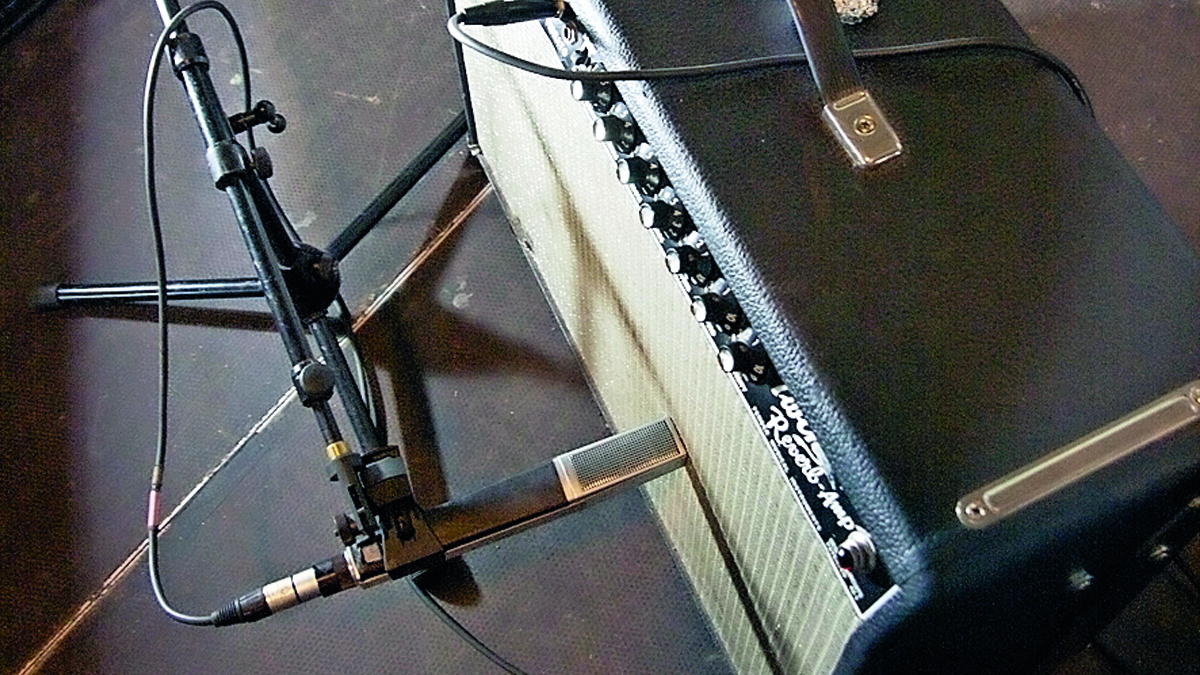Synth skills: how to make your soft synths sound real
Breathe some extra character into your in-the-box sounds

If all your sound sources are coming from plugins in the box, you often have to work much harder to inject life into your mixes. Though there are many great-sounding plugins, externally recorded sources/instruments often tend to sound richer and more engaging from the outset. However, much can be done to address the flatness in your synth lines. Here are a few tips…

Re-amping
The first thing to try is running elements from your track through an external amp, then back into your DAW (re-amping). Firstly, assign the plugin track you want to re-amp to its own output in your DAW. Then take this output into a DI box and in turn, the output from the DI box into the amp. You can either try taking a direct feed from the line out of the amp itself back into your DAW, or stick a mic (or two) on the amp's speaker.

Re-rooming
Solo the audio you want to process, send it out through your monitors, then stick up a single mic (or pair of mics) in your room and record the mic'd room sound back into your DAW. Use this new audio to replace the original plugin audio, or blend it. You can get great results using an X/Y or spaced mic pair and you'll end up with a nice spacious stereo room recording that's way more exciting than the original plugin audio!

Hardware filters
Try sending your plugin synth audio out of your interface and into the audio/filter input on an analogue synth whilst experimenting with the envelopes, filters and effects. This should add a nice bit of air, colour and movement to the sound. Don't forget you can also run the audio out of the synth and through an amp, or other pedals at the same time for an extra stage of colour.

Tape it
Most studio-heads have various bits of old gear lying about, so don't be scared to use Minidisc recorders, old reel to reels, boom boxes or cassette players/recorders as external audio processors. Try running a hot signal into a Minidisc recorder, as you can get some nice pumping compression and this can add some excitement to flat-sounding audio. Or use cassette machines to add some subtle colour or drive them hard for a nastier sound.

Stompboxes
Try using distortion/overdrive or filter stompboxes to process your plugin audio externally. For crunchy and tapey sounds, try analogue pedals as they break up and distort more musically and less harshly than digital ones. Moog Moogerfoogers (MF101) and Electro Harmonix valve pedals (TubeEQ) can yield great results. The Roland RE20 Space Echo pedal also works great when you drive the input and disable the delay/reverb.

Amp simulator
If you decide to stay in the box, there are still many ways to inject life into your sounds. Try duplicating the track and adding an exciter/overdrive plugin to just a specific frequency range. Low-pass the original audio at 750Hz to remove the highs, then on the duplicate track high-pass the audio so only the highs above 750Hz are present, then add an amp simulator and overdrive plugin to just the high-end.
Want all the hottest music and gear news, reviews, deals, features and more, direct to your inbox? Sign up here.
MusicRadar is the internet's most popular website for music-makers of all kinds, be they guitarists, drummers, keyboard players, DJs or producers.
GEAR: We help musicians find the best gear with top-ranking gear round-ups and high-quality, authoritative reviews by a wide team of highly experienced experts.
TIPS: We also provide tuition, from bite-sized tips to advanced work-outs and guidance from recognised musicians and stars.
STARS: We talk to artists and musicians about their creative processes, digging deep into the nuts and bolts of their gear and technique. We give fans an insight into the actual craft of music-making that no other music website can.
